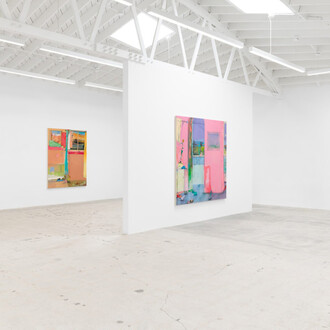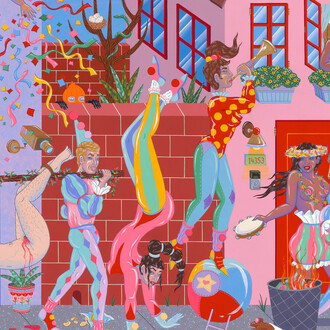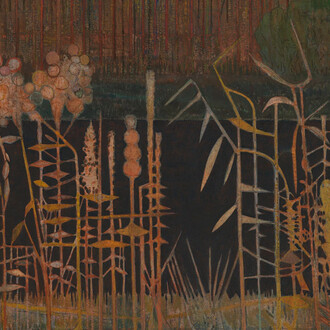1- All men who repeat a line from Shakespeare are William Shakespeare.
2- It seems like a simple case of real versus copy, a mimesis with two terms. Rather they renounce direct imitation by using colors that are clearly artificial and fantastic: greens, reds and blue. As much as they imitate canvas they dramatise their status as independent form. Which is to say that three degrees or levels of representation are in play, not just two: the surface of the actual canvas, made of cotton and bought at the store; the hand woven canvas, whose simulation is both approached and renounced; and the painting itself, the lines and color patches that have their own autonomy, in a median space between the poles of original and copy. When a representation is placed alongside or against the original, representation is raised to a higher power: it becomes ‘simulation’. After all, that something can be accurately represented need have no bearing on the status of the original: representation does not necessarily produce of itself the idea of competition between the original and copy, or of the copy’s independent power. But when the copy stands adjacent to or in the place where one would expect the real thing, something more is involved; the original loses its autonomy, it becomes the first in a series that also includes fictions.
3- white=red=black=blue=yellow=green=violet
4- If anything, this work begins as an attempt to make something, if not nothing.
5- One may say that this painting no longer has any plastic character, but that it is indicative or critical; among other things, indicative/critical of it’s own process. This zero/neutral degree of form is “binding” in the sense that the total absence of conflict eliminates all concealment (all mythification or secrecy) and consequently brings silence. One should not take neutral painting for uncommitted painting.
6- It is a complete thing. Anyone can see it and everyone is certain that it is a complete thing, and some are certain it is a complete thing and some are feeling it as being existing, a complete thing, and certainly it is a complete thing, and certainly then it is in a way a gentle thing, that is to say a gently complete thing, that is to say a thing that is a complete thing and some are certain of this thing.
7- I don’t become important, things just pass through me. I’m an appropriator.
Ethan Cook (b. 1983 in Texas) lives and works in New York, NY. Cook has exhibited at institutions including the Fondazione 107, Turin; National Museum of Capodimonte, Naples and the Chelsea Art Museum, New York. The artist has shown internationally at galleries including T293, Milan; Sadie Coles, London; American Contemporary and Bodega, New York. His work and practice has been covered by the New York Times, Interview Magazine and W Magazine. This is the artist’s first solo show with the gallery.
















